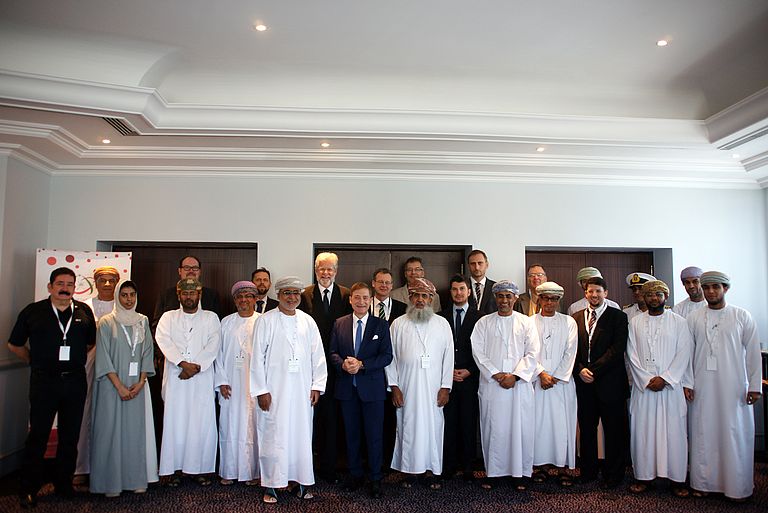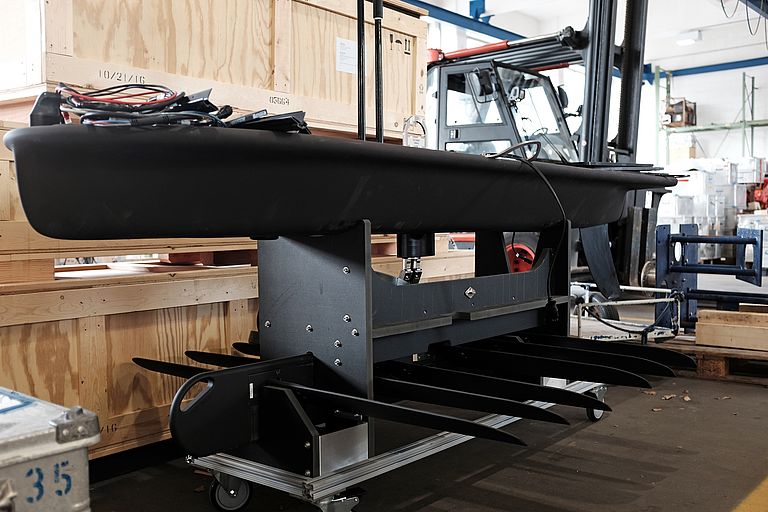Technology and Research Project in Oman enters the Active Phase
- Partners from GEOMAR, UFZ and the Institute for Advanced Technology Integration meet in Maskat -
30.03.2017/Maskat, Kiel. At many coasts all over the Earth, freshwater is discharged into salty seawater through sources at the seafloor which are recharged by on-land groundwater. If groundwater deposits located near the coast are used excessively, this process bears a danger of being reversed, causing seawater to enter into the water-bearing layers and spoil the freshwater remaining there. This is a serious matter especially for countries located in dry regions.
With this in mind, in 2015 The Reseach Council (TRC) of Oman and the Omani Institute for Advanced Technology Integration (IATI) signed a Cooperation Agreement with the GEOMAR Helmholtz Centre for Ocean Research and the Leipzig Helmholtz Centre for Environmental Research (UFZ). The projected work focusses on intensive exploration of the pathways taken by groundwater in the Omani coastal area, on land as well as below the near-coast seafloor. This week, the partners involved in this cooperation are coming together for a workshop in the Omani capital of Muscat to discuss the results obtained so far and to prepare for the next phase of active surveying. They are joined by the German Ambassador in Oman, Hans-Christian Freiherr von Reibnitz, and the director of GEOMAR, Prof. Dr. Peter Herzig
One of the main tasks of this project is the enhancement of a so-called Wave Glider, an autonomous measuring platform which will be surveying sites of groundwater discharge off the coast of the Dhofar region in western Oman. The wave glider is propelled by wave energy. Its sensors are powered by solar panels. Thus, the device can be operated off the coast by remote control for weeks. It is currently being prepared for deployment at GEOMAR's Technology and Logistics Centre.
One important milestone of this project was the first research cruise performed by a GEOMAR team on the Omani research vessel AL SALT in the autumn of 2016. During this cruise, the seafloor of the working area off Salalah was mapped. For the first time, a pattern of numerous potential groundwater seeps became visible. This map was now presented in Muscat. It will serve as a basis for the first deployments of the wave glider.
In addition, for monitoring of the wave glider deployments, GEOMAR has developed an internet portal which allows the scientists in charge to check the Wave Glider's movements and important measurement data. "The portal has already been successfully used during a first test run", Warner Brueckmann, project coordinator from GEOMAR, states.
The government of Oman has granted a total of 3.2 million Euros for the funding of this project. "Not only Oman will benefit from the the technologies to be developed within this project", states Prof. Peter Herzig, director of GEOMAR. "They will help to enhance ocean monitoring in general."
This project is one of three pilot projects funded as part of a long-term cooperation between the Helmholtz Association and the Sultanate of Oman.
![[Translate to English:] Dr. Warner Brückmann vom GEOMAR stellt in Maskat die 2016 erstellte neue Meeresbodenkarte vor. Foto: Peter Herzig, GEOMAR [Translate to English:] Dr. Warner Brückmann vom GEOMAR stellt in Maskat die 2016 erstellte neue Meeresbodenkarte vor. Foto: Peter Herzig, GEOMAR](/fileadmin/_processed_/b/4/csm_2017-03-30_IATI-Workshop_001__6e519081ee.jpg)






